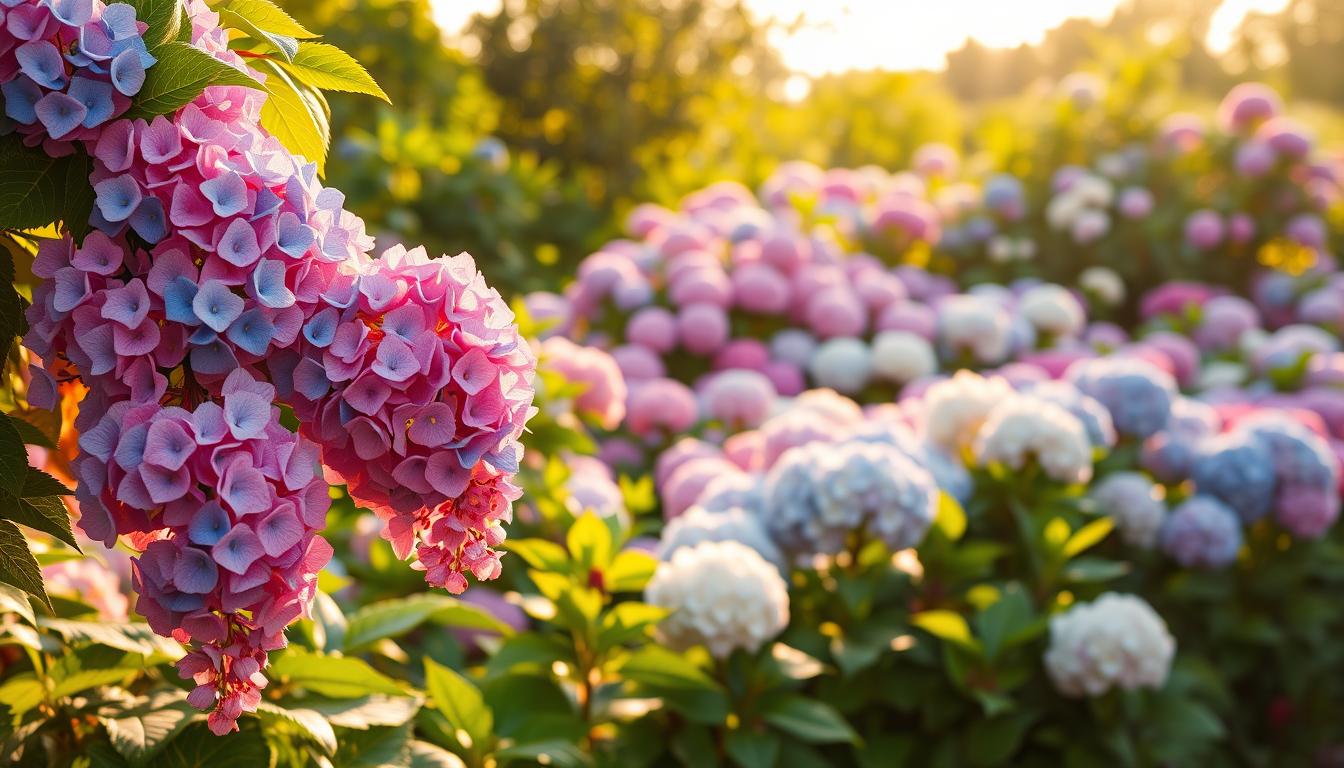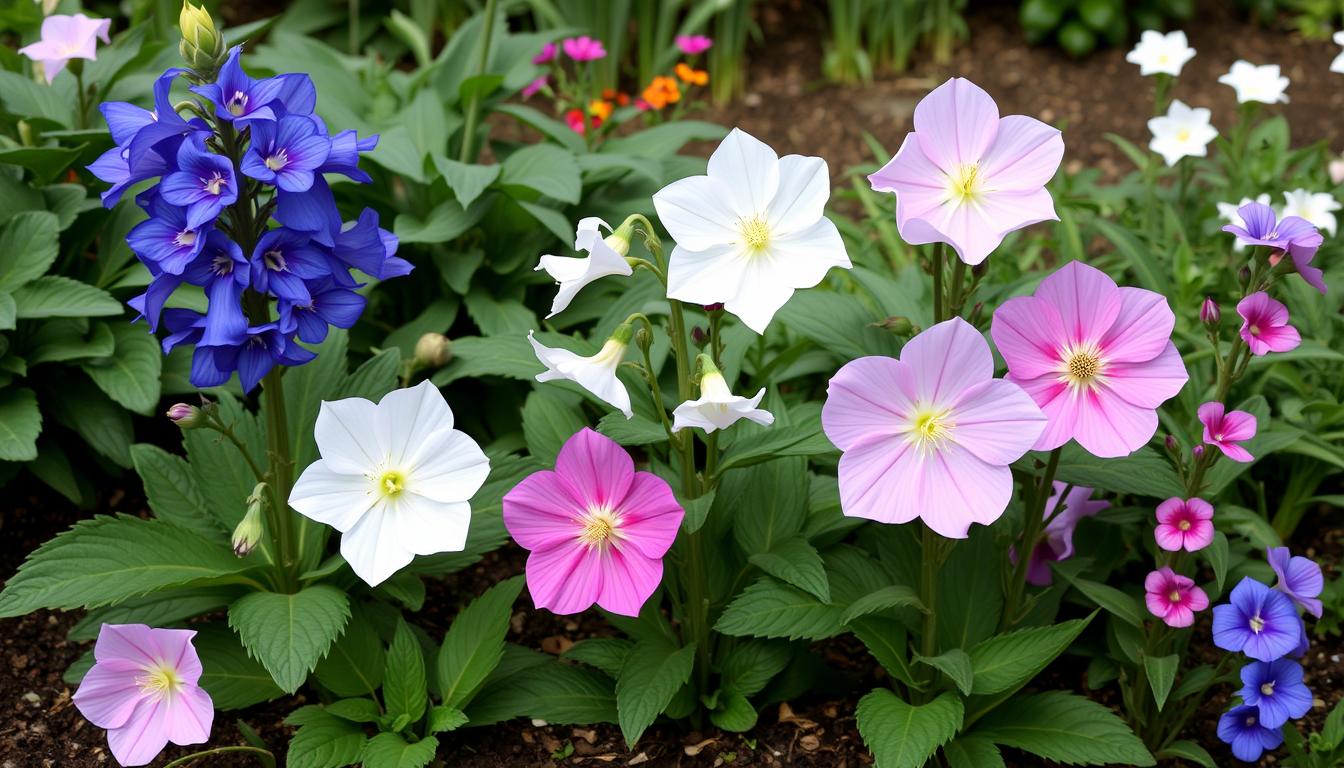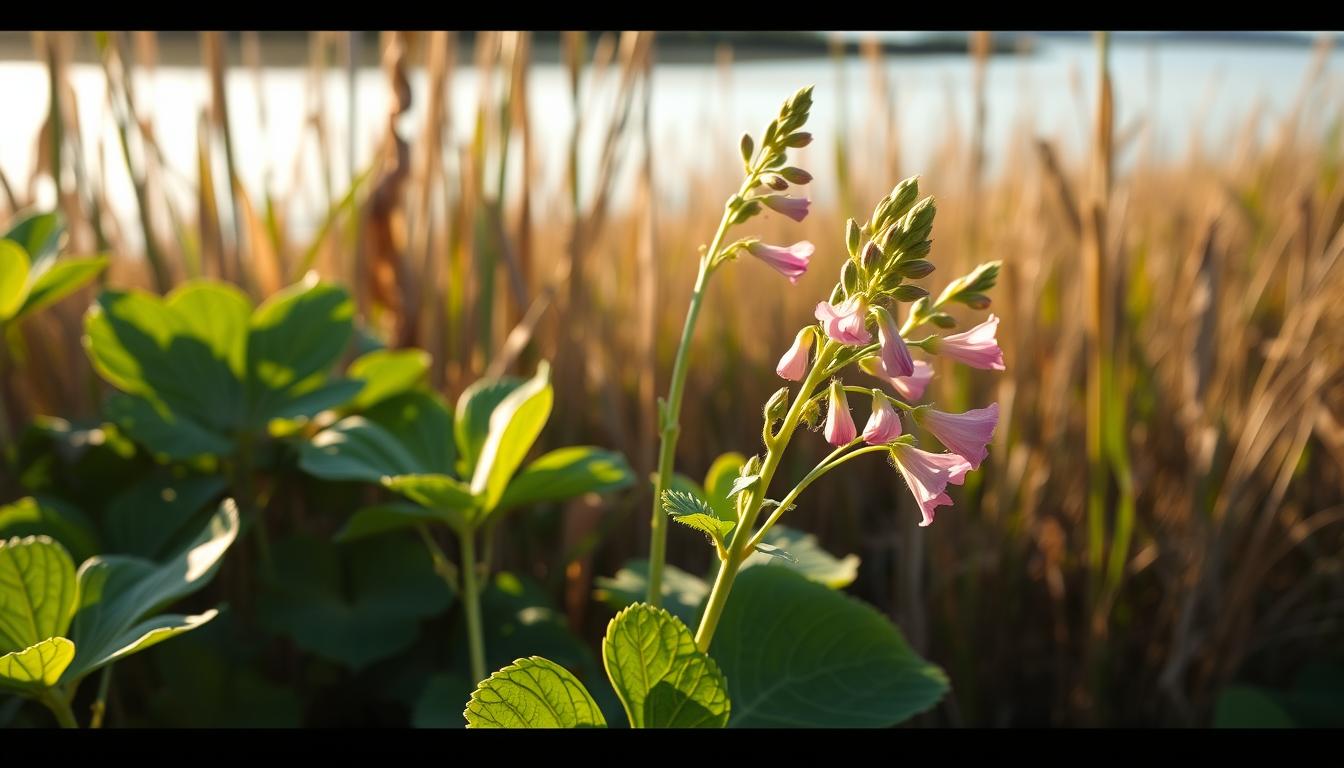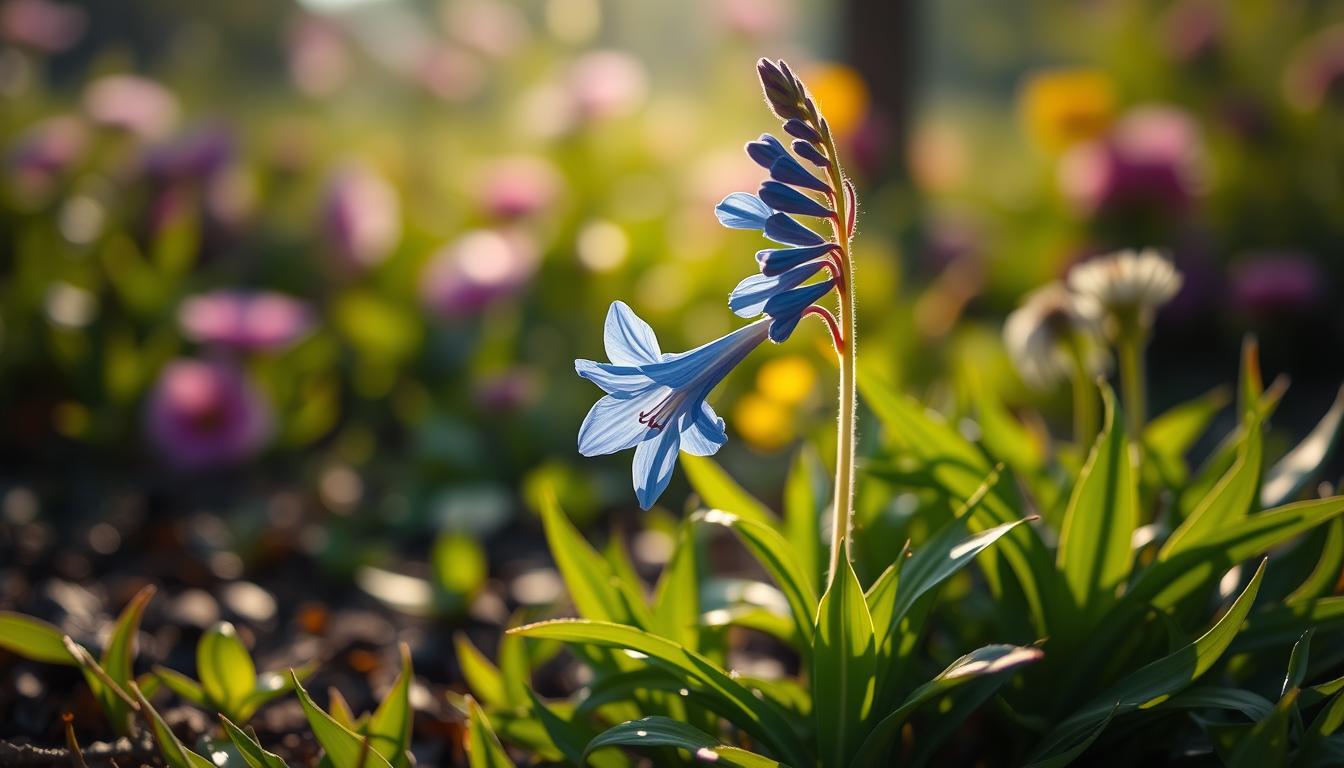How to Grow and Care for Lacecap Hydrangea
“The garden is a grand teacher. It teaches patience and careful watchfulness; it teaches industry and thrift; above all, it teaches entire trust.” – Gertrude Jekyll’s words resonate deeply with those cultivating lacecap hydrangeas. These Japanese natives transform landscapes with their elegant floral displays, blending artistry with botanical wonder.
Distinctive flat-topped blooms set these shrubs apart from traditional mophead varieties. Clusters of delicate fertile flowers sit at the center, framed by showy sterile sepals. This unique structure creates a living kaleidoscope that shifts colors based on soil chemistry – azure blues in acidic earth, soft pinks in alkaline conditions.
Professional landscapers prize lacecap hydrangeas for their dual-purpose appeal. They serve as stunning focal points in garden designs while producing exceptional cut flowers. Modern cultivars offer enhanced resilience against temperature fluctuations and diseases, making them suitable for diverse USDA zones.
Successful cultivation begins with understanding three critical factors: light requirements, moisture management, and pruning techniques. These deciduous shrubs thrive in morning sun with afternoon shade, their lush foliage protected from harsh midday rays. Consistent watering during establishment ensures vigorous root development.
Recent breeding advancements have expanded bloom durations and color stability. Gardeners now enjoy varieties that maintain vibrant hues longer while requiring less maintenance. This evolution makes lacecap hydrangeas increasingly accessible to both novice and expert plant enthusiasts.
Introduction to Lacecap Hydrangeas
Gardeners across the U.S. are rediscovering the subtle charm of these floral masterpieces. Unlike their showier cousins, lacecap varieties offer a botanical conversation piece with layered textures and refined structure.
Discovering Their Unique Beauty
The magic lies in their two-tiered blooms. Tiny star-shaped flowers form a living brooch at the center, encircled by larger petal-like sepals. This natural artistry creates depth and movement in garden beds, especially when breezes dance through the foliage.
Variegated leaves add year-round interest, with deep veins framing pointed edges. From spring’s fresh green to autumn’s golden blush, the foliage transitions like seasonal couture. Bushes maintain tidy shapes, rarely exceeding 6 feet in height.
Overview of Benefits in the Garden
Landscape architects prize these shrubs for triple-duty performance. They anchor borders, brighten shaded corners, and supply endless cut flowers. Their extended summer bloom cycle supports pollinators while keeping vases filled.
Established plants thrive with minimal fuss. Deer-resistant leaves and sturdy stems withstand unpredictable weather. Whether framing a patio or lining a woodland path, they adapt to diverse settings without losing their elegant demeanor.
Understanding Lacecap Hydrangea Varieties and Characteristics

Botanical diversity defines these flowering shrubs, with over 70 recognized Hydrangea macrophylla cultivars thriving in American gardens. Their adaptability across USDA zones 4-9 makes them landscape staples, offering tailored solutions for different climates and design needs.
Botanical Insights: Hydrangea macrophylla
This species displays deciduous growth with oval, serrated leaves featuring raised venation. True to their macrophylla classification (“large leaf”), foliage reaches 4-8 inches long. Unlike mophead types, lacecap flowers preserve wild hydrangea genetics through their naturalistic flat blooms.
Versatile Bloom Types and Colors
Modern varieties like ‘Mariesii Variegata’ combine visual drama with practicality. Its cream-edged leaves pair with white sepals surrounding blue florets. For northern gardeners, ‘Let’s Dance Diva’ survives zone 5 winters while offering pH-responsive color shifts from pink to violet-blue.
Three factors guide selection:
- Mature size (dwarf to 10-foot specimens)
- Bloom duration (60-90 days)
- Cold tolerance (zone-specific cultivars)
White flowers maintain purity regardless of soil chemistry, while blue/pink types serve as living pH indicators. Professional growers recommend matching plant dimensions to space constraints – compact hydrangea varieties thrive in containers, while larger specimens create living screens.
Step-by-Step Guide: How to Grow and Care for Lacecap Hydrangea

Mastering lacecap hydrangea care requires precision during establishment and restraint in maintenance. These shrubs reward gardeners who balance attentive planting with strategic hands-off periods.
Planting Techniques for Success
Time your planting during mild spring mornings or autumn afternoons. Dig holes three times wider than the root ball to encourage lateral growth. Position the crown slightly above soil level – their shallow roots rot easily when buried deep.
Backfill with native soil mixed with compost. Water thoroughly, maintaining consistent moisture for six weeks. Established plants develop drought tolerance, but young specimens need weekly soaking during dry spells.
Pruning and Maintenance Best Practices
Sharp bypass shears make clean cuts when shaping hydrangea bushes. Remove spent blooms just below the flower head after summer flowering. Never cut more than one-third of stems – over-pruning sacrifices next year’s blossoms.
Reblooming varieties like ‘Twist-n-Shout’ benefit from deadheading while preserving old wood. Apply balanced fertilizer in early spring, avoiding high-nitrogen formulas that promote leaves over flowers.
Ideal Site Selection and Soil Preparation

Strategic placement and earth composition form the foundation of thriving lacecap specimens. Proper positioning balances light exposure with protection, while tailored soil adjustments unlock their full chromatic potential.
Sunlight, Shade, and Microclimate Considerations
These flowering shrubs demand morning sun paired with afternoon shade for optimal performance. Southern gardeners should prioritize shade during peak heat hours to prevent leaf scorch. Northern growers can allow more direct light while monitoring soil moisture.
Microclimate factors significantly impact plant health. Shield specimens from harsh winds using fences or companion plants. Avoid areas near heat-reflective surfaces like concrete walls, which create artificial temperature spikes.
Optimizing Soil pH and Nutrient Amendments
Conduct professional soil testing before planting to determine baseline conditions. Ideal pH ranges between 5.5 (blue blooms) and 7.0 (pink blossoms). For color modification, apply aluminum sulfate to acidify or lime to alkalize gradually over weeks.
Enhance drainage with organic compost while maintaining moisture retention. Mix three inches of aged manure into topsoil before transplanting. Established hydrangea plants benefit from annual mulching with pine needles to maintain acidic soil conditions naturally.
Successful cultivation hinges on this dual focus: smart site selection creates growth opportunities, while precise soil management ensures lasting vitality. These practices establish the framework for decades of spectacular blooms.
Watering and Fertilizing Essentials

Proper hydration and nutrition form the backbone of vibrant lacecap specimens. These shrubs demand precise moisture control paired with timed nutrient delivery to sustain their signature blooms and lush foliage.
Effective Watering Methods for Deep Root Growth
Deep irrigation proves critical for establishing resilient root systems. Soak soil thoroughly until water reaches 8 inches deep, then allow partial drying before repeating. This cycle encourages roots to seek moisture at lower levels, boosting drought resistance.
Container-grown plants require daily checks during summer heat. Their limited soil volume dries rapidly, often needing morning and evening watering. Use pots with drainage holes to prevent soggy conditions that harm roots.
Watch for early stress signals: curled leaves indicate thirst, while yellowing suggests overwatering. Mulch with shredded bark to maintain consistent moisture levels. During peak growing season, increase frequency to match bloom production demands.
Fertilization follows a three-phase approach:
- Early spring: Balanced 10-10-10 formula jumpstarts growth
- Late May: Second application supports flower development
- July: Final feeding strengthens stems for winter
Slow-release granules work best, preventing nutrient burn. Always water thoroughly after feeding to activate the fertilizer. Adjust schedules based on regional climates – southern gardens may need earlier applications than northern zones.
Overcoming Common Challenges and Pests
Even robust lacecap hydrangeas face seasonal threats requiring strategic solutions. Vigilant gardeners balance prevention with targeted treatments to maintain plant health and bloom quality.
Managing Pests and Fungal Diseases
Aphids and spider mites cluster beneath leaves, while slugs chew irregular holes in foliage. Apply neem oil sprays weekly during infestations, focusing on leaf undersides. Improve air circulation to combat powdery mildew – space plants 3-4 feet apart and prune overlapping branches.
Winter protection proves critical in northern zones. Shield shrubs from harsh winds using burlap screens or plant near south-facing walls. Reblooming varieties like ‘Endless Summer’ safeguard flower production by budding on new and old wood.
Tips for Adjusting Soil to Influence Bloom Color
Alter bloom hues through pH modifications. For blue flowers, apply aluminum sulfate when soil tests below 6.0. Use garden lime to raise alkalinity for pink tones, mixing 1 cup per plant annually. Always water amendments thoroughly to prevent root burn.
Monitor leaves for nutrient deficiencies – yellowing indicates iron shortage in alkaline soils. Pair pH adjustments with organic mulch to maintain stable conditions. These practices ensure vibrant color displays while supporting long-term plant vitality.



